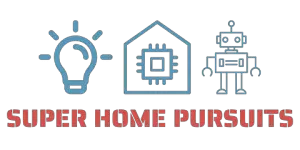Are you looking for a way to get the most out of your Philips Hue Lightstrip? Hardwiring it may be the answer.
In this article, we will discuss what Philips Hue Lightstrip is, the benefits of hardwiring it, what you need to hardwire it, a step-by-step guide to hardwiring it, troubleshooting tips, the advantages and disadvantages of hardwiring it, and alternatives to hardwiring it.
Keep reading to learn all you need to know about hardwiring Philips Hue Lightstrip!
Short Answer
Yes, you can hardwire Philips Hue lightstrip.
It requires a Philips Hue power supply that can be plugged into a wall outlet or hardwired into a junction box.
You’ll also need the Hue Bridge and Hue app to control the light strip.
The light strip can be cut to size and is available in various lengths, making it easy to customize your lighting setup.
What is Philips Hue Lightstrip?
Philips Hue Lightstrip is a flexible light strip that can be used to add ambient lighting to any room.
It is an easy and cost-effective way to customize your space, with a wide range of colors and brightness settings available.
The strip can be cut to size, so it can fit any space, and it can be attached to any wall or surface with the included adhesive backing.
The light strip also has a waterproof coating, making it suitable for outdoor use.
With its slim profile and low power consumption, Philips Hue Lightstrip is the perfect way to add a unique touch of light to any area.
Benefits of Hardwiring Philips Hue Lightstrip
Hardwiring Philips Hue lightstrip provides a number of benefits over plugging it in.
First, hardwiring eliminates the need to plug in the light strip, freeing up outlets for other uses.
This is especially important for those who have limited outlets in their home.
Additionally, hardwiring the light strip is a more permanent solution and provides a more seamless look.
The light strip will be installed directly into the wall, which makes it less visible and allows you to create a more unified look.
Finally, hardwiring can even provide more stability and reduce light flicker.
When properly installed, hardwired light strips can provide a consistent and reliable lighting solution.
In addition to the aesthetic and practical benefits, hardwiring Philips Hue lightstrip is also a great way to save on energy costs.
By hardwiring the light strip, you can avoid the need to plug in the strip and run it off of a plug-in power source, which can draw a lot of electricity and increase your energy bills.
Hardwiring the light strip also means that it will be connected to the same power source that your other lights and appliances are connected to, allowing you to take advantage of the same energy-saving measures.
What You Need to Hardwire Philips Hue Lightstrip
When it comes to hardwiring Philips Hue Lightstrip, there are some essential items you need to have in order to complete the job.
First, you will need Phillips Hue Lightstrip and the appropriate power supply.
You will also need a small Phillips-head screwdriver, electrical tape, a voltage tester, and wire cutters.
Additionally, if you are adding more than one light strip, you will need additional power supplies and splitters.
It is important to note that in order to hardwire Philips Hue Lightstrip, you will need to have access to an existing electrical wiring system.
You will also need to make sure that the power supply you purchase is compatible with the type of electrical wiring system you have in your home.
Once you have all the necessary items, the next step is to safely and correctly connect the Philips Hue Lightstrip to the existing electrical wiring.
To do this, turn off the power to the area where you will be working and use the voltage tester to make sure that the power is off.
Next, carefully remove the protective cover of the electrical box, and use the screwdriver to loosen the screws on the side of the box.
Once the screws are loosened, you can carefully pull the box away from the wall and access the wiring.
At this point, you can start connecting the Philips Hue Lightstrip to the existing wiring.
You will need to use the wire cutters to strip away the insulation from the wires, and then connect the wires to the power supply.
Make sure to use electrical tape to secure the connections.
Once all the connections have been made, you can carefully tuck the wires and power supply away, and attach the Philips Hue Lightstrip to the wall.
Finally, you can turn the power back on and test the light strip to make sure it is working properly.
Step-by-Step Guide to Hardwiring Philips Hue Lightstrip
For those looking to create a more permanent lighting solution using Philips Hue Lightstrip, hardwiring is a great option. With a few basic tools and some electrical knowledge, you can easily hardwire Philips Hue lightstrip into your existing electrical wiring. Here is a step-by-step guide to hardwiring Philips Hue lightstrip:
1. Shut off power to the area where you will be installing the lightstrip. This is a very important step, as it ensures your safety while you are handling electrical wiring.
2. Cut the existing wiring to the correct length. Be sure to leave enough slack to connect the Philips Hue lightstrip.
3. Strip the ends of the wiring, exposing the bare copper. Connect the exposed copper to the terminals on the Philips Hue lightstrip.
4. Connect the other end of the Philips Hue lightstrip to the existing wiring. Be sure to secure the connections with wire nuts.
5. Turn the power back on and test the lightstrip. If everything is working properly, the lightstrip should illuminate.
By following these steps, you can easily hardwire Philips Hue lightstrip into your existing electrical wiring.
This is a great way to create a more permanent lighting solution without needing to plug in the lightstrip.
With a little bit of electrical knowledge and the right tools, hardwiring Philips Hue lightstrip is a simple and straightforward process.
Troubleshooting Tips for Hardwiring Philips Hue Lightstrip
If youve decided to hardwire your Philips Hue Lightstrip, its important to keep a few things in mind.
Before you begin, make sure youve read all the instructions carefully and have the necessary tools to complete the job.
Here are a few tips and considerations to keep in mind when hardwiring your Philips Hue Lightstrip.
First, make sure you have the correct power supply.
Philips Hue Lightstrip requires a dedicated power supply with a minimum of 16.5 volts and a maximum of 24 volts.
If you dont have the correct power supply, your lightstrip wont be able to function properly.
Second, consider the power of your lightstrip.
Youll want to make sure that the wattage of your lightstrip doesnt exceed the wattage of your power supply.
If the wattage of your lightstrip is too high, it could overload the power supply, leading to a potential fire hazard.
Third, make sure you install the lightstrip correctly.
Philips Hue Lightstrip is designed to be installed in a straight line, so be sure to follow the instructions carefully.
If installed incorrectly, the lightstrip could be damaged or even cause a fire.
Finally, its important to make sure that the lightstrip is properly grounded.
All electrical wiring needs to be properly grounded to avoid any potential safety risks.
By following these tips, you can ensure that your Philips Hue Lightstrip is installed correctly and safely.
With a little bit of electrical knowledge, hardwiring Philips Hue Lightstrip can be done in a few simple steps.
Advantages and Disadvantages of Hardwiring Philips Hue Lightstrip
Hardwiring Philips Hue lightstrip has both advantages and disadvantages.
On the plus side, hardwiring the lightstrip eliminates the need for bulky power adapters or cords, creating a cleaner and more aesthetically pleasing look.
Additionally, hardwiring the lightstrip ensures that the lights stay on even if there is a power outage, making it a more reliable lighting solution.
However, hardwiring the lightstrip also has some drawbacks.
For one, it requires a more complex installation process since it involves connecting the lightstrip to your homes electrical wiring.
Additionally, hardwiring the lightstrip means that you wont be able to easily move it to a different location in your home.
Finally, hardwiring the lightstrip means that you will need to hire a professional electrician to do the job, which can be expensive.
Alternatives to Hardwiring Philips Hue Lightstrip
Although hardwiring Philips Hue lightstrip is a great option for those who want to create a more permanent lighting solution, it is not the only way to incorporate Philips Hue lightstrip into your home.
There are a few alternatives that can be used to achieve the same effect without the need for hardwiring.
One alternative is to use a power adapter.
This is a great option for those who do not want to get involved in electrical wiring but still want to enjoy the convenience of Philips Hue lightstrip.
A power adapter allows you to plug the Philips Hue lightstrip directly into your wall outlet, bypassing the need for hardwiring.
Another alternative is to purchase a Philips Hue lightstrip kit.
These kits come with all the necessary components to set up Philips Hue lightstrip, including the necessary power adapter and Philips Hue bridge.
This makes it an easy and hassle-free way to get started with Philips Hue lightstrip.
Finally, you can also purchase a Philips Hue Lightstrip Extension Kit.
This kit allows you to extend the length of your Philips Hue lightstrip, allowing you to customize the lighting to fit any room size.
This is a great option for those who want to add extra length to their Philips Hue lightstrip without the need for hardwiring.
No matter what your preferred method of incorporating Philips Hue lightstrip into your home is, there are plenty of alternatives to hardwiring Philips Hue lightstrip.
Whether you choose to hardwire, use a power adapter, purchase a kit, or extend your lightstrip with an extension kit, you can easily customize your space with Philips Hue lightstrip.
Final Thoughts
Hardwiring Philips Hue Lightstrip is a great way to create a more permanent lighting solution in your home.
With a little bit of electrical knowledge and the right tools, you can easily hardwire your Philips Hue Lightstrip in a few simple steps.
Though it may take a bit of extra effort, the end result is worth it – you’ll have a beautiful, custom ambient lighting that lasts.
Now that you know how to hardwire Philips Hue Lightstrip, why not give it a try?

